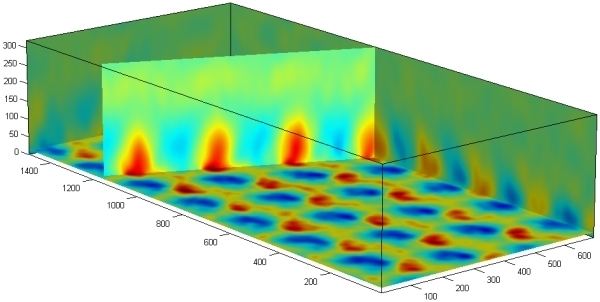
ACS PRF | ACS
All e-Annual Reports

42259-AC5
Atomic-Scale Mechanisms of Friction
In this second and last year of the present project, we concentrated on finalizing our experiments regarding the exploration of the atomic origins of friction. As indicated before, we were using two parallel routes:
1. In a first activity, we were attempting to measure the entire force field between a tip and a sample by three-dimensional dynamic force spectroscopy (3D-DFM). From these data, the lateral forces can be recovered with sub-atomic precision and piconewton resolution for any distance above the surface, offering completely new insights into atomic friction.
2. In collaboration with the University of Münster, Germany, we studied the contact area dependence of friction by manipulating antimony nanoparticles deposited on graphite. This is a new approach that overcomes the otherwise usual limitations regarding contact area sizes and material combinations for frictional studies of nanocontacts. For the first time, superlubricity of extended nanocontacts could be demonstrated, which is directly related to the specifics of the atomic structure of the sliding interface. <>2 Exploring the slider-sample interaction potential by dynamic force spectroscopy at low temperatures

Figure 1: 3D-DFM data set of graphite.
We then concentrated on the imaging of graphite due to its importance as solid lubricant. Finally, we succeeded in acquiring a data showing the desired quality. This is demonstrated in Fig. 1, which shows the vertical force within an image size of 15 Å × 7 Å recovered from about 30000 forces curves. Pixel density in lateral direction is about 6 pm and in vertical direction 1 pm. For representing the data in the image, the average force for each particular height had been subtracted from the data in order to enhance the differences. Force resolution is about 1 pN; the entire data set had been recorded within 40 hours.

Figure 2: Lateral forces on graphite between atoms.
From this data set, we can now recover the lateral forces with the same resolution. Figure 2 shows such an image, where the lateral forces are plotted for a constant normal force of about -2.6 nN. The lateral forces are of the order of piconewton and their directions are indicated by the arrows. Please note that the recovery of these data from the measured data took quite some time due to the enormous amount of data in the set and required the programming of many new analysis routines. Therefore, data analysis is far from being complete at this stage. We expect that once finished, at least three publications will have been emerged from this activity (the first one being almost completed), potentially offering entirely new insights into the locality and the distance-dependence of lateral forces on the atomic scale.
<>3 Exploring the contact area dependence of friction and its dependence of the atomic specifics of the interface structure by nanoparticles manipulation
As the completion of our system was delayed, we started collaborating with the University of Münster to achieve results on the fundamental mechanisms of friction more quickly. Another innovative AFM-based method is applied in these experiments: An AFM operated in contact mode is used to manipulate antimony nanoparticles with diameters between 50-500 nm grown on graphite. Measurements were also performed under ultrahigh vacuum conditions to ensure clean surfaces. The lateral force during the island pushing process was acquired for islands of different sizes. Quantitative analysis of the lateral forces recorded during particle displacement as a function of the interfacial contact area between particle and substrate reveals for most particles a linear increase, reinforcing the universality of Amontons' law. Some manipulation events, however, exhibit no detectable frictional resistance, which is attributed to the occurrence of superlubricity. As this was so surprising and interesting, we spend much of this year with additional experiments designed to confirm this finding, which had already been reported in last year's report. These experiments have been performed both in ultrahigh vacuum as well as under ambient conditions, confirming our earlier findings. An overview over our data is given in Fig. 3, where the “regular” data is colored black, while the superlubric events are indicated in red. A first paper describing the specifics of the used method is currently in print; at least two other publications are under preparation.

Figure 3: Friction vs. contact area of Sb nanoparticles.